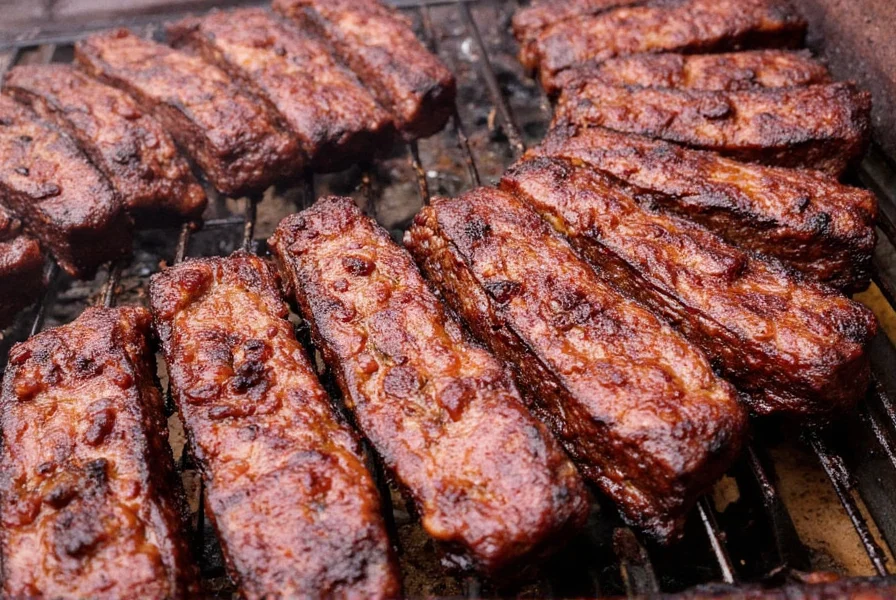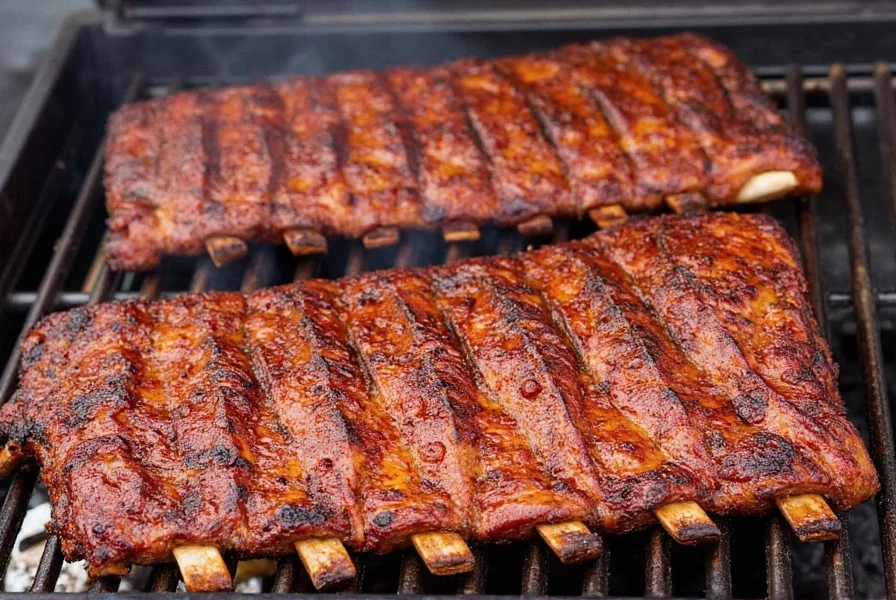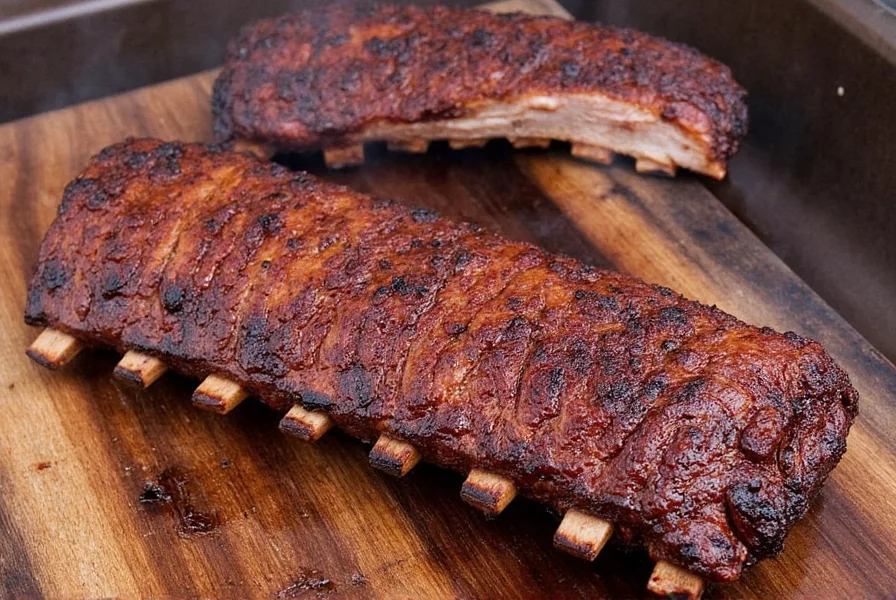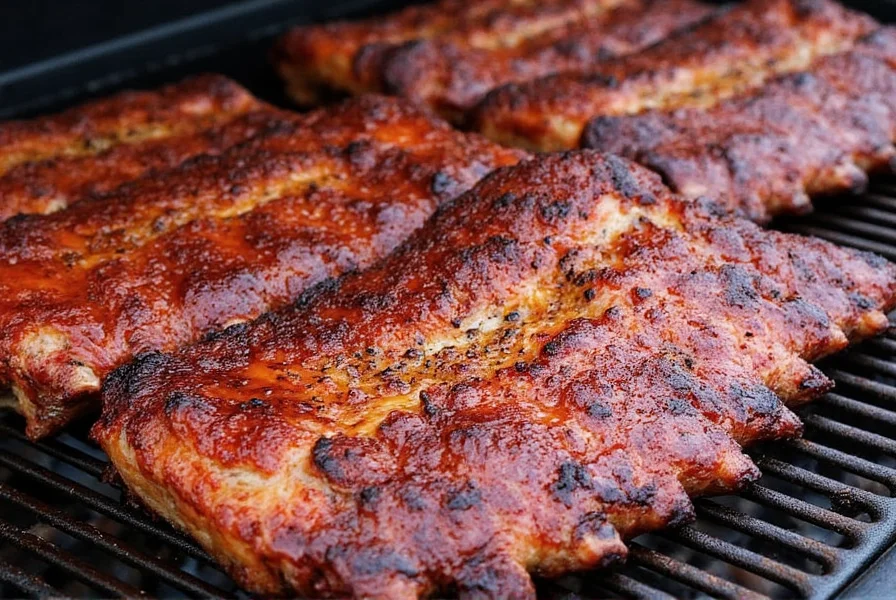Mastering the internal temperature of smoked ribs is essential for achieving fall-off-the-bone tenderness while ensuring food safety. The ideal range is scientifically proven to break down collagen into gelatin without drying out the meat.
Table of Contents
- Why Temperature Matters for Smoked Ribs
- What's the Ideal Internal Temperature?
- How to Measure It Accurately
- Frequently Asked Questions
- Conclusion
Why Temperature Matters for Smoked Ribs
According to the USDA Food Safety and Inspection Service, pork must reach a minimum internal temperature of 145°F (63°C) for safety, but ribs require higher temperatures to achieve optimal tenderness. Below 185°F (85°C), collagen remains intact, resulting in chewy meat. Between 190°F (88°C) and 205°F (96°C), collagen fully converts to gelatin, creating the signature melt-in-your-mouth texture while maintaining moisture. This temperature range is critical for both safety and quality.

What's the Ideal Internal Temperature?
The scientifically validated range for perfectly tender smoked ribs is 190°F (88°C) to 205°F (96°C). This range balances collagen breakdown with moisture retention, as confirmed by professional barbecue associations and food science research.
| Temperature Range | Texture & Safety Status |
|---|---|
| 180°F – 185°F (82°C – 85°C) | Undercooked collagen; chewy texture; USDA safety minimum not met for ribs |
| 190°F – 195°F (88°C – 91°C) | Optimal tenderness for competition-style ribs; collagen fully converted; safe to eat |
| 200°F – 205°F (93°C – 96°C) | Melt-in-your-mouth texture; ideal for slow-smoked ribs; safe with proper resting |
Always verify temperature in the thickest part of the meat, away from bones. Cooking time varies by rib type: baby back ribs typically reach ideal tenderness at 190°F–195°F, while spare ribs may require 195°F–205°F due to higher collagen content.
How to Measure It Accurately
Accurate temperature measurement is non-negotiable for perfect ribs. Follow these evidence-based steps:
- Use a calibrated probe thermometer with ±1°F accuracy (e.g., ThermaWorks Thermapen ONE).
- Insert probe into the thickest meat section, avoiding bones, fat pockets, or grill grates.
- Check 3–4 spots per rack to ensure uniform cooking.
- Verify temperature after resting (5–10 minutes tented with foil) for final doneness.

Frequently Asked Questions
Why do ribs need higher temperatures than USDA's minimum pork safety standard?
The USDA's 145°F minimum ensures food safety but doesn't address tenderness. Ribs contain dense collagen that requires sustained heat between 190°F–205°F to convert into gelatin. Cooking to only 145°F would leave ribs tough and inedible despite being safe.
Can ribs be overcooked by temperature?
Yes. Temperatures above 210°F (99°C) cause muscle fibers to contract excessively, squeezing out moisture. While collagen continues to break down, the meat becomes dry and mushy. The 205°F upper limit is the threshold where texture degradation begins.
What's the food safety danger zone for ribs during smoking?
The USDA-designated danger zone is 40°F–140°F (4°C–60°C), where bacteria multiply rapidly. Smokers operate at 225°F–250°F, ensuring ribs pass through this zone within 2 hours. Never hold ribs below 140°F for more than 2 hours total (1 hour if ambient temperature exceeds 90°F).
Do different rib types require different temperatures?
Baby back ribs (leaner) reach ideal tenderness at 190°F–195°F. Spare ribs and St. Louis cuts (higher collagen/fat) need 195°F–205°F. Always verify with a thermometer—never rely solely on time or appearance.
Why might ribs be tough at 200°F?
Common causes include: 1) Thermometer placement near bone (reads lower than actual meat temp), 2) Insufficient resting time after cooking, 3) Failure to remove the membrane from bone side, or 4) Inconsistent heat distribution in the smoker. Always check multiple spots and allow 5–10 minutes resting.
Conclusion
Mastering the internal temperature of smoked ribs requires precision, not guesswork. By adhering to the 190°F–205°F range verified by USDA guidelines and professional barbecue standards, you ensure both safety and exceptional tenderness. Always use calibrated thermometers, verify multiple spots, and respect resting time. This science-based approach transforms ribs from potentially tough to perfectly melt-in-your-mouth every time.












 浙公网安备
33010002000092号
浙公网安备
33010002000092号 浙B2-20120091-4
浙B2-20120091-4